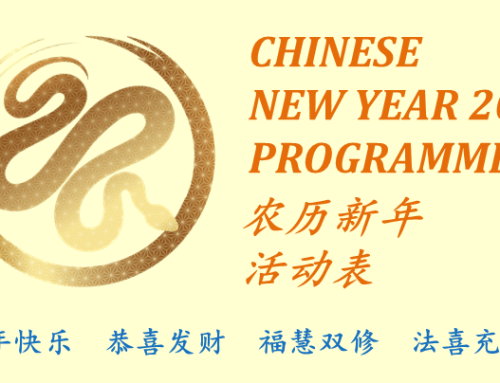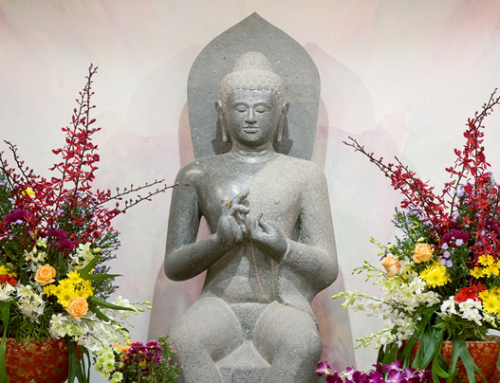SINGHAPURA MAITHRI GAMA: Reconstruction At Hambantota
Introduction
The ancient chronicles[1] of Sri Lanka record a number of instances when the sea rose up to engulf the Island. Very little information is available on the nature and extent of damage and loss of life, and there is no information on the location of earthquakes that led to tsunami events in Sri Lanka in the past. One of important note however occurred in the 2nd century BCE, over 2200 years ago. At that time the waters came within 6 km of Kelaniya, which is today 45 km away from the sea.
But nothing in history prepared Sri Lanka for the events of 26 December 2004 as the sea rushed onto the land around the entire circumference of the Island. In some places the waves rose up to 12 meters and ran over 1 km inland over areas occupied by vastly higher population and structural densities than 2200 years prior.
A magnitude 9.0 earthquake deep undersea off the cost of Indonesia had fractured the sea floor along a 1200 km fault [2] causing it to lift and fall by 15 m. The fracture line was parallel to the coast of Sri Lanka and an unimaginable volume of water was set racing at 600mph towards the Island. For most of its journey the wave was barely noticeable above the surface but as it reached the shallows it sucked the surf out from the beach exposing sea floor and reefs never seen before. Then it threw it all back onto the land. Few people who saw the wave coming lived to tell about it.
Devastation
Nearly 31,000 people were killed instantly or later as a result of injuries[3]. Over 500,000 people were left homeless [4] as their homes were knocked down or washed away. Schools and libraries, religious buildings, shops and factories, railways and roads were destroyed around the entire periphery of Sri Lanka. Not only lives and homes were lost but livelihoods too were destroyed. Fishermen, shop keepers, tourist workers and countless other people found themselves with nothing and no way to earn it back.
Hambantota
Where once there was a bustling seaside community, little remained on the afternoon of December 26th. Located on Sri Lanka’s southern most coast, an economically neglected part of Sri Lanka, Hambantota is a fishing village and home to roughly 12,000 people. Many of the residents are Malay Muslims. Besides fishing, the production of sea salt is a major industry.
At about 9:30am on Sunday, December 26th, an 8.8 meter wall of water inundated much of Hambantota. The natural sand dunes protected parts of the village but the low lying areas were utterly devastated, especially that near the entrance to Karagan Lewaya lagoon.
Thirteen hundred people died when the tsunami struck — nearly 7,000 more were injured. As well as residents, many people had come from nearby villages to sell vegetables in the Sunday market which had been recently relocated to the entrance of Karagan Lewaya. The lorries and buses that they were arriving on were washed into the lagoon along with most of the structures that had occupied approximately 100 hectares of the village. Most of the survivors were left with nothing — but the desire to return to the lives they once had.
Relief (Local Response)
The world would soon begin to show its compassion and caring but it would be many hours before the world would even know about the disaster and many more hours before aid could be mobilized. In these first hours and days of darkness it would be the people of Sri Lanka themselves who would answer the cries of their fellow citizens. Religious, ethnic and political differences were suspended as those spared from the immediate effects showed their great character in responding to the immense human suffering. Churches turned their sanctuaries into clinics and shelters, monks tore their robes to bandage wounds, common people prepared and distributed hot meals.
Bellanwila Rajamaha Vihara, through its Bellanwila Community Development Foundation (BCDF), began surveying the situation within hours. Members didn’t have to go far to find firsthand information. Just ten miles southwest of the temple, in Moratuwa, the chaos was readily apparent. While the world was still to learn of the disaster, BCDF was loading cooked food and water into vans and distributing them as they drove along the almost impassable roads. Returning to the temple they organized themselves for a more massive aid effort.
On December 29th, members of BCDF left the temple with lorries full of food, water, medicine and other essentials. Some of the coastal roads had been cleared but long detours inland were required in many places. On this day they made their way as far as Galle[5] which had been badly devastated by the fury of the sea. Within a week the BCDF was operating country-wide.
On January 3, 2005, Ven. Bellanwila Dhammaratana arrived from Singapore with three volunteers from the Singapore Buddhist Library (SBL). Prior to leaving Singapore they had shipped one and a half tons of aid items by air and a forty foot sea container including eight tons of rice.
Upon arriving at Bellanwila, they were joined by six local doctors and the team set off to areas that had suffered the greatest impact: the west coast from Kalutara to Galle, the Matara coast on the southern tip, and Trincomalee in the troubled north eastern region.
Reconstruction
By mid-January, aid and relief were pouring into Sri Lanka through local and foreign NGOs[6], BCDF and SBL began to turn their attention to the reconstruction of homes and lives. On January 30, the Dayaka Sabha[7] of Bellanwila Rajamaha Viharaya, headed by Venerables Bellanwila Dhammaratana and Bellanwila Wimalaratana met to draw up plans to help the people most affected utilising the generous contributions mentioned earlier. The Dayaka Sabha selected the village of Godagama North on which to focus their efforts.
At the same time, the Singapore Buddhist Research Society (parent organisation of the Singapore Buddhist Library) approached the Singapore Red Cross Society (SRCS) regarding help to build homes in a new village for 200 families.
The response to the Singapore Red Cross Society’s “Tidal Waves Asia Fund?had been excellent. As of September 26th, the Society reported contributions of over S$86 million. Over 50% of the money had been earmarked for reconstruction efforts in the hardest hit areas with approximately S$13 million being designated for Sri Lanka.
In parallel with the Godagama Project described above, Ven. Bellanwila Dhammaratana and the Singapore Buddhist Research Society made application to “Tsunami Reconstruction Facilitation Committee (TRFC) for funds to build new homes to be build on land to be obtained from the Sri Lankan government on.
Because the Godagama project entailed building homes on property already owned by the beneficiaries, work could begin almost immediately. The SRCS project would be delayed until government bureaucracy would finally release the required land.
On May 3rd, after many delays, the Sri Lankan government finally announced the release of just over 500 acres of land for the construction of new permanent housing units. The SBRS was allocated a plot of approximately 30 acres at Siribopura – Site 2 about 3 km NW of Hambantota city.
The original village of Siribopura consisted of about 180 homes and 780 people. The government’s plans now call for about 2000 additional homes housing about 8400 people in the vicinity. Site 1 is 1600 homes of which Tzu Chi (950) and C.A.R.E. (150) are the largest donors. Site 2 is 434 homes of which SBRS and SRCS were originally contracted for 200.
The character of the land is gently sloping jungle previously occupied by wild elephants. An electric barrier has been erected to prevent elephants from entering the new home sites. Infrastructure is beginning to appear as the dirt lane into the area is being replaced with a wide paved road and electrical power lines are being strung.
Singhapura Maithri Gama
After meeting the TRFC’s stringent eligibility requirements, our project to build 200 permanent housing units was approved along with 33 others from various voluntary welfare organizations and non-governmental organisations. A budget of S$ 881,880 (80% of the total projected cost) was agreed, with the remaining 20% to be put forward from the Singapore Buddhist Research Society (SBRS) and its supporters.
Project coordinators from the SBRS participated in the Project Planning Workshop as part of the TRFC Integrated Project System. Through the Workshop we received training on the SRCS’s tracking, monitoring and reporting system for the disbursement of funds.
A Memorandum of Understanding (MoU) for the construction of 200 homes for Tsunami victims was exchanged between representatives of the Government of Sri Lanka and Ven. Dhammaratana. The MoU specified thirty acres of land near Hambantota and called for the 200 homes to be built on lots of 20 perch each at a cost of approximately S$ 6000 per unit.
The architectural firm of Manil & Mahanama Prematilleke Company was awarded the design contract in coordination with David Ee of Singapore and the construction is being done by the Dharmadasa Construction Company.
Current Status
With 6000 homes being built in the Hambantota District and more in other areas of Sri Lanka, the cost of building materials and labour escalate daily. In addition, the government arbitrarily increased the minimum square footage from 500 sqft to 550 sqft. These factors have combined to increase our original budget from $S 6000 to nearly $S 8000 per unit.
Consequently, in agreement with the SRCS, we have reduced the number of planned units from 200 to 150. Through additional contributions from SBRS we intend to now build more community facilities in addition to the planned Community Centre on the 50 lots that have been made redundant.
To reduce the impact of rising costs several steps have been taken:
Approximately 800 salvaged doors were sent by SBRS to the Bellanwila Community Development Foundation in Boralesgamuwa where they are resized and the hardware is replaced. They are then transferred to the construction site where 5 are used in the construction of each home.
Dharamadasa Construction is manufacturing the required wooden door frames and aluminum cased windows on site.
They are also producing 4 inch concrete blocks on site at the rate of 2000 per day with their own equipment.
Conclusion
The people of Sri Lanka, especially those in the Hambantota area, and the Singapore Research Society are extremely grateful to the Singapore Red Cross Society and the citizens of Singapore for their compassion and generosity. Never in its long history has Sri Lanka experienced such a calamity and without your help and that of many others it would be years before she could recover on her own.
For our part, we will strive with all of our effort to insure that the Singhapura Maithri Gama project is completed successfully on time, on budget and to specifications. We know from our experience in Godagama what it means to families to regain their homes and their lives .
Appendix D: Selected Statistics for Hambantota District
Population: Hambantota D.S. Division only (Hambantota town)
- 35,564 rural
- 11,213 urban
Ethnicity: Hambantota D.S. Division only (Hambantota town)
- Sinhalese 37,839
- Malay 5,137
- Sri Lankan Moor 2,830
- Sri Lankan Tamil 805
Hambantota District wide percentages
- Read & write Sinhalese 88.5%
- Read & write English 8.8%
Employment
- Unemployment rate 10.3%
- Employed as skilled agricultural/fisheries worker 41.8%
- Employed as skilled craft & related worker 16.9%
- Employee 37.7%
- Own account worker 47.1%
- Unpaid family worker 14.1%
Housing
- Permanent house 58.8%
- Semi-Permanent 40.1%
- Stand alone house 95.6%
- Owned by a family member 92.2%
- Rooms per house 3.7
Construction
- Floor; 65.7 %: cement, 32.6% mud
- Walls: 70.5% brick, 22.9% mud
- Roof: 73.4% tile, 20.3% cadjan
Utilities
- Water: 48.1% well, 27.8% tap
- Lighting: 53.5% Kerosene, 45.2% electricity
- Cooking fuel: 94.9% firewood
Source: Department of Census & Statistics; Census of Population and Housing – 2001, pub. May 2003






![Past Events – [CANCELLED] Luang Por Viradhammo Dhamma Talk 2024](https://buddhlib.org.sg/wordpress_9/wp-content/uploads/2024/09/CANCELLED-Luang-Por-Viradhammo-Dhamma-Talk-500x383.jpg)